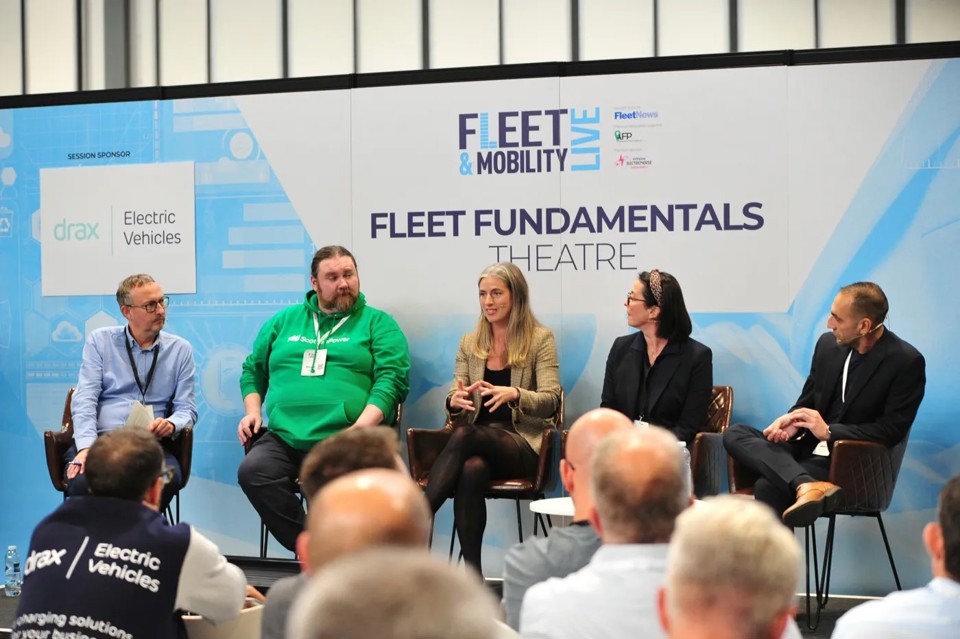Planning is key for an organisation looking to implement an effective – and futureproof – workplace electric vehicle charging infrastructure.
Although many company vehicle drivers have to take their vehicles home overnight, organisations which operate a back-to-base model where their cars or vans are returned to set locations each day will need to implement on-site charging as they transition to EVs.
But this can be a complex task with many factors to consider, making an effective strategy vital, delegates at the Planning for Workplace Charging Infrastructure seminar, sponsored by Drax Electric Vehicles, at Fleet & Mobility Live, heard.
“Planning is absolutely key in making sure you’ve got the right infrastructures in the right locations, doing the right jobs,” said Naomi Nye, head of sales at Drax Electric Vehicles.
“It is important to understand what your business model is. What vehicles have you got? How do they move around? How do they move from site to site?
“What are their dwell times? Where are they stopping? Where they stop is where they will be charged, and they need to be charged when the driver is doing other things – it shouldn’t be an inconvenience to charge these vehicles.
“When you’re looking at that data and really understand what is happening, you can start to fill in the gaps.
“You can start to design your infrastructure based on hardware that’s going to last, not only for your current issues and charging needs, but also making sure that what you put in the ground is future proof, flexible and will grow with you.”
Sara Sloman, chief strategy officer at Paythru and director of The EV Café, told the seminar that while the hardware installed is important, the software used with them is just as vital.
“If you’ve procured highly-communicative chargers that can be updated and upgraded, they you’re going to be in a much better position,” she said.
“Even if your power doesn’t go up, or you haven’t been able to electrify your depot as well as you’d like, if you can deploy things like smart charging overnight or even a battery on site, then you’re going to be able to benefit from what used to be a horrific CapEx through to something that actually is an alleviator of that.
“They could be a revenue stream, there is the potential to share the chargers you’ve invested in.”
Research of 400 fleet managers carried out by Drax found cost was the number one barrier for installing workplace charging infrastructure.
“We understand the cost of the vehicles, we’re used to working on three-, four- and five-year cycles, but the infrastructure side is quite new and people are unsure how to manage their ongoing costs, not just their CapEx costs,” said Nye.
“You’ve got the ongoing costs of software, the back office, as well as maintenance and service. Who’s paying for that, how do you manage that and how do you make it work?
“There are different ways of looking at the finance now. You can look at installing the infrastructure in stages and spread it over different budgets, you can look at finance options such as leasing and these are becoming really popular and kind of keeping the ability to not be tied into technology as well.”
Bob Murphy, technical executive at Scottish Power said hus employer is among the companies looking into providing ‘charging as a service’, which takes the risk away from the fleet.
“It takes CapEx away from the business,” he added. “The CPO (chargepoint operator) installs, operates and runs that whole charging network to benefit the fleet without the business really having a stake in it, having to manage it, insure it or anything thing like that.
“That’s proven to be quite popular with a lot of small businesses that may be transitioning where they can’t access the funding anymore, or the OZEV funding is drying up, because the current batch of OZEV workplace charging funding is due to finish in March next year.
“After that there’s not going to be an awful lot of support there for it, but’s that’s where the private sector companies are coming in to take-up some of that slack.
“There’s a recognition that it’s not going away. We’re still in the very early stages. If you look at the shape of the market that’s available, there certainly a shift now towards these kinds of things that will help make the transition easier.”
All these complexities makes it having a a strategy defined and built out from day one invaluable to organisations, said Nye.
“I think a lot of people don't know where to start,” she added. “There is a whole plethora of information out there, but it kind of comes at you from all angles but what do you actually need to listen to?
“For me, getting the experts in at a very early stage, helping them support you and build that strategy out is key.
“You can include things like future technology and future advancements, such as flexibility services and V2G, which may not be things you need now, but things that can come into play and can support you later down the line.”
Also on the panel was Chris Demetriou, assistant director of corporate fleet, transport and accessible community transport environment and climate change, at London Borough of Islington.
The full debate can be watched below





















Login to comment
Comments
No comments have been made yet.